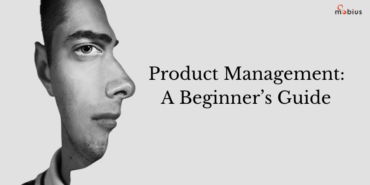When you enter the term ‘Product Management’ in Google, you’d probably see a lot of definitions, frameworks, best practices, and the day-to-day life of a Product Manager. And, of course, you cannot miss seeing the Venn diagram.

Well, Product Management (PM) is a highly cross-functional role, and it means different things in different organizations. It encompasses a lot of things that no single article can do justice to its holistic elucidation. This article isn’t about the conventional wisdom about Product Management. It covers some of the unspoken (or probably less spoken) aspects of Product Management and what it takes to become a great Product Manager.
Great Ideas Doesn’t Always Become Great Products
Sometimes we overestimate the success of a product from its seed. But, what stands between a great idea and a great product is its craftsmanship. The real game lies in the game plan and its successful execution. Both are critical. And the product manager is the magic person here who holds the responsibility of manifesting the product vision into reality. So, what are the crafts of product management? What does the successful building of products entail? Let’s dive in.
The Power of Focus
One of the most important aspects of product management is the focus. Product Management as a function involves a lot of cross-functional learning and interfacing. This involves a lot of information draining into your mind from competitors, internal stakeholders, customers, prospects, communities, and the web. Along your journey of execution, there will always be signals and noise. When do you hear, and when do you go deaf (metaphorically!) is the focus that you bring to the table.
Focus is a very thin line, sometimes mistaken as an excuse for not differentiating or thinking out of the box. Focus can indeed avoid the unnecessary directional pull. But at times, you might fall into the fallacy of focus for not thinking laterally. As a product manager, building a product is having hundreds of things in the brain and fitting them together as and when needed.

Sound Decisions Hinge on Clarity
I remember reading about a brilliant incident that happened at Microsoft a few years back. There is this problem at the face of the management: there might be a huge customer churn if there is a frequent outrage of the server, which could permanently cripple the business. And to solve the problem, the leadership team should communicate the point of action downwards.
The only thing that was communicated by the Vice President was the need for high velocity. And a few wondered why there was no communication about improving reliability that had the highest risk to the business.
The answer was very simple.
If they had said they needed to ship fast and improve reliability, reliability would be used as an excuse to not ship quickly, and the need to ship quickly would be used as an excuse for poor reliability, and they’d achieve none of their goals.

Goal and execution are two sides of the same coin. And the ‘real’ execution, the most crucial part, demands your clarity.
Rationale Behind Delegation
A lot of people can do a lot of things, but how do you delegate the right thing to the right people at the right time would be a great skill for an astute Product Manager. There often arises a situation of who should take up what. Though the question is about what, the decision is always about why. And your rationale behind delegation, though may appear inconsequential, would have an intrinsic impact on your vision. Let me explain this with an instance from my favorite reads of Economics— the law of comparative advantage.
Imagine two kinds of tasks in hand— a core task requiring special skills and a secretarial task that does not demand any specific skillset. And there are two people to delegate the tasks to— A and B. One may consider giving Person A the secretarial task because he might be better at performing them than Person B. However, the time A spends doing the secretarial task is the opportunity cost which could be spent more profitably for the core work. Though B might not do the secretarial job as well as A, B might be ill-suited for the core work.
As a product manager, you may have tasks of various kinds— rudimentary, time-sensitive, tedious, or of high priority. But your thought process behind delegation, though might appear trifling at the moment, may add to your long-term goal. Though JIRAs of the world help you manage your work, your rationale behind every small decision is pivotal for your success.
Sunk Costs and Pivots
Sunk cost is when you’ve already invested in something that cannot be recovered. And the fallacy is you continue to do so, hoping for a favorable outcome. You get trapped in the sunk-cost fallacy under the hope that it will eventually ‘pay off.’ But sticking on may do more harm than good. The most interesting example is reading a boring book, giving it a chance minute by minute for it to turn out good and spin a twist.
As a product manager, you may often find yourself in such situations, and the real product success lies in your judgment and decision in each such situation. The situation that demands a pivot needs pulling the plug at the right moment, saving you a fortune of effort and money. Sometimes it might be too early to abandon or abort. More often than not, the marginal value of each decision would be hazy. So, when do you pivot? When do you stay put? Might not be an easy one. But eventually, you get better at this.

The Power of Unlearning
If there is one thing that kills building a great product, it is the confirmation bias. Confirmation bias is the tendency to see things that support previously held beliefs. As humans, it is natural that we’re prone to this. But this might be a costly mistake to travel down the road. Knowledge is often sticky. Though learning can take you to places, the power of unlearning is far underrated. Knowledge and learning gained over a period of time can attenuate with change. Unlearning is not only a possible solution but a survival kit to thrive for the ingrained view developed over a period of time.
Towards the Vision
It’s not about the vision but how you approach the vision.
One such company that inspires me with how they approach the vision would be Amazon. Amazon widely uses the approach of ‘working backward.’ They take the inquisitive approach to work backward from the customer on what would excite the customer.
Any new initiatives for new products or features start with writing an internal press release of the final product. If the press release is not convincing enough, they shelve the idea or scrape it, and the Product Manager keeps iterating on the press release until they sound to be actually beneficial. Once approved, this press release is used as a guiding light for their roadmap.
Final Words
Product management is not a clean slate. But asking the right questions pumps you towards your vision. And in the end, the mettle you undergo would be worth struggling for. If you want an overall understanding of Product Management, sharpen your product mindset, and ignite your PM career, check out the Practical Product Management Program from ProMobius Varsity. We promise you it would be a decent heuristic.





